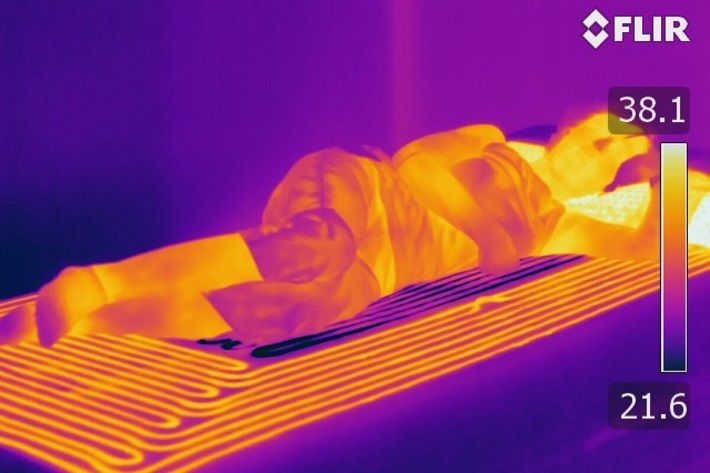
The mattress is designed as such that it can simultaneously cool the central areas of the body while warming the neck, hands, and feet, according to the University of Texas at Austin website. This increases the blood flow to dissipate body heat and consequently cause sleepy feelings. As the skin of the neck is an important bodily thermostat for humans, the mattress targets it via a heating pillow.
The researchers published a proof-of-concept study regarding the combination of a warming pillow plus cooling-warming, dual-zone mattress system in the Journal of Sleep Research, when noting two versions of the mattress — one that uses water and the other that uses air to control the core body temperature.
The study, which involved testing the mattresses with 11 subjects, required the participants to go to bed two hours earlier than usual, some nights using the cooling-warming functions of the mattresses and other nights not. It was found that the warming and the cooling-warming mattress helped them fall asleep faster – about 58 per cent faster compared to nights when they did not use the cooling-warming function despite the setting of an earlier bedtime. Decreasing the internal body temperature significantly reduced the time needed to fall asleep and even improved the quality of sleep.
The project, which was carried out to discover new ways to use thermal stimulation to help people sleep, was conducted in the laboratory of Kenneth Diller, a professor in the Cockrell School of Engineering and an expert in heat and temperature regulation for therapeutic devices. “It is remarkable how effective gentle warming along the cervical spine is in sending a signal to the body to increase blood flow to the hands and feet to lower the core temperature and precipitate sleep onset,” Diller was quoted by the website. “This same effect also enables the blood pressure to fall slightly overnight, with the benefit of allowing the cardiovascular system to recover from the stress of maintaining blood flow during daily activities, which is highly important for long-term health.”
“We facilitate the readiness to fall asleep by manipulating internal body temperature-sensitive sensors to briefly adjust the thermostat of the body, so it thinks the temperature is higher than it actually is,” said Shahab Haghayegh, a research fellow at Harvard Medical School’s Division of Sleep Medicine and Brigham and Women’s Hospital, who helped lead the development of the mattress at UT Austin while earning a Ph.D. in biomedical engineering. Haghayegh graduated in 2020.
Other researchers who worked on the project are Sepideh Khoshnevis and Michael Smolensky of UT Austin, Ramón Hermida of the University of Vigo in Spain, Richard Castriotta of the University of Southern California, and Eva Schernhammer of Harvard University.
The team has already secured a patent for the cooling-warming mattress and pillow technology and is looking for partnerships with mattress companies to commercialise it.
Fibre2Fashion News Desk (NB)

